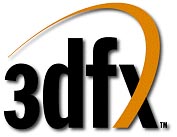 AnandTech, along with a
number of other online and print magazines, were recently invited down to 3dfx
headquarters in San Jose, CA for a look at "something new." We weren't
told exactly what, and hopes of a hands on preview of 3dfx's next generation
product were quickly squashed as we were informed that it would be a technology
demonstration rather than a product announcement. But that's ok, because we
still got to see one of the key technologies planned for that next generation
product that 3dfx says will be available "this Fall."
AnandTech, along with a
number of other online and print magazines, were recently invited down to 3dfx
headquarters in San Jose, CA for a look at "something new." We weren't
told exactly what, and hopes of a hands on preview of 3dfx's next generation
product were quickly squashed as we were informed that it would be a technology
demonstration rather than a product announcement. But that's ok, because we
still got to see one of the key technologies planned for that next generation
product that 3dfx says will be available "this Fall."
That technology is known as the T-BufferTM, named for 3dfx's CTO and brain behind the technology, Gary Tarolli. The T-Buffer solves a number of problems involved with 3D computer graphics that are caused by the more general problem of aliasing. As defined by 3dfx, "aliasing is the under-sampling of a source image that causes errors in the image finally drawn on the computer screen." The T-Buffer solves aliasing issues in space, time, and focus.
Wait a second!
3dfx talking about improving image quality? The same guys that brought us the Voodoo3 with largely the same core as the original Voodoo Graphics? The same Voodoo3 that fought in the trenches of the 16-bit vs. 32-bit and frame rate vs. image quality battles all over the net?
At first glance, it seems like 3dfx, the company that has traditionally said that image quality means nothing if the frame rate is compromised, are now jumping on the image quality bandwagon. However, 3dfx maintains the position that "frame rate is king" and that 60 fps is necessary for the best gaming experience. They view 1024x768 as the new standard resolution for gaming and intend to deliver all of their new effects without compromising that goal.
The T-Buffer - blurring the line between PC's and reality
In the most basic sense, conventional accelerators render a frame to a frame buffer, which is then displayed on screen. Double and triple buffer techniques allow for additional frames to be rendered while the current frame is being displayed.
![]()
3dfx's T-Buffer technology works unlike any other conventional accelerator currently on the market by allowing multiple frame buffers to be rendered to simultaneously. The output is then the accumulation of these multiple renderings.

With all accelerators, less image data can be stored than would be in a perfect world due to memory, bandwidth, etc. limitations. Thus, some data is lost in each render and this process of discarding data can result in visual artifacts, including aliasing. The T-Buffers solves this problem with these multiple renderings that effectively increase the sampling rate by supersampling.










0 Comments
View All Comments